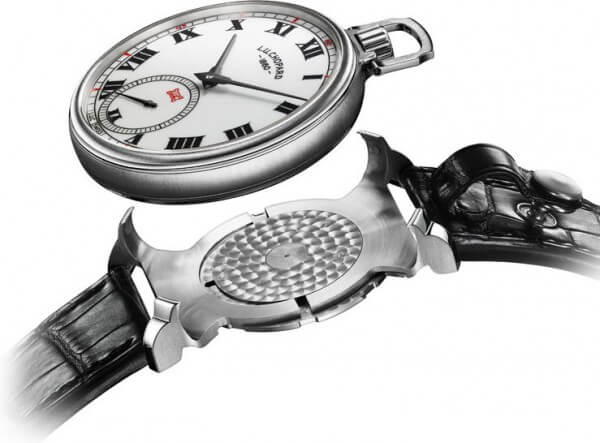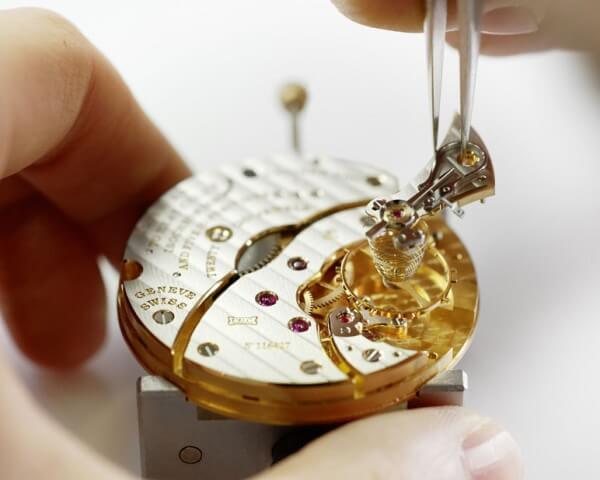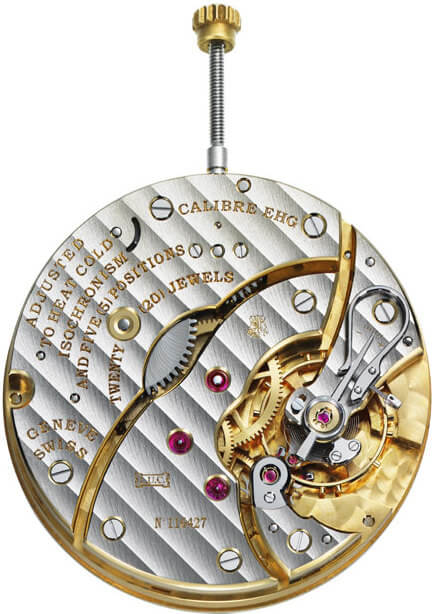For six years, barely a word was breathed about the collaboration between Chopard and the Ecole d’Horlogerie de Genève (EHG), the Geneva watchmaking school established in 1824 and with a current roll call of 235 students. Six years during which the Manufacture’s watchmakers and teaching staff at EHG were hard at work producing nothing less than a new calibre. It would become the basis for the study piece that each student must produce during their three years of training, as well as the movement inside the L.U.C Louis-Ulysse The Tribute pocket watch, a commemorative model for Chopard’s 150th anniversary this year.

A problem of supplies
“The study piece is to watchmaking students what a masterpiece is to compagnons: a genuine rite of passage,” the Genevan firm explains. “It remains forever engraved on its maker’s memory, a milestone in the life of any watchmaker. It is a testimony to their talent, proof of their rigour and perfectionism, and confirmation of an acquired expertise. In Switzerland, only the Ecole d’Horlogerie de Genève continues to respect this tradition.” A decade ago, this tradition came under serious threat, as Daniel Favre, director of the Centre de Formation Professionnelle Technique to which EHG belongs, explained to an audience of journalists. “In 2000, we saw the first signs of an imminent shortage of essential parts for the movements that go into our study pieces. The movement we used was beginning to date and we were having trouble sourcing the parts. The company that supplied the escapements, for example, no longer had the tools to make them. Furthermore, we were finding it hard to locate suppliers who could accommodate the small quantities we need – just 36 calibres a year for each new intake of students – not to mention questions of cost.”
But every problem has a solution! When Karl-Friedrich Scheufele, Co-President of Chopard, heard about this dilemma, he lost no time in contacting the school. “We already had it in mind to make a pocket watch for Chopard’s 150th anniversary, which we are celebrating this year. Then I heard about the difficulties EHG was experiencing in obtaining supplies. This was the beginning of our partnership, which is made to last. The watchmaking professions are of vital importance to a manufacture such as Chopard. We have 40 apprentices on site and our own training centre. We were honoured to take up this challenge and to show our commitment to the grand tradition of watchmaking in the canton of Geneva.”
COSC and Poinçon de Genève
Staff at Chopard’s engineering bureau and teachers at EHG thus began work on resuscitating the school’s old calibre. The 4,400 hours it took to develop the movement, and the 900 hours fine-tuning should come as no surprise, knowing that the teams had set their sights high. Indeed, the new movement has retained its dual certification by the Poinçon de Genève and the Contrôle Officiel Suisse des Chronomètres (COSC). “Because we could no longer count on supplies of our old escapement, we really had no other choice than to build the movement from scratch, this time using a regulating organ from Nivarox, whose escape wheel we redesigned to comply with Poinçon de Genève standards,” Jean-Paul Ducret, a teacher at EHG, explained. The result is a movement whose frequency has been boosted from 2.5 Hz to 3 Hz (21,600 vibrations/hour) and whose power reserve has gone from 45 to 80 hours. Chopard has already supplied the school with 750 movements in the form of unfinished parts. These “kits” will be the starting point for students’ work and EHG has supplies for the next twenty years.

Chopard, meanwhile, has completed its development of the model that houses this L.U.C EHG calibre. As the company explains, “L.U.C Louis-Ulysse The Tribute is a generously sized pocket watch with a 49.6mm case, a ceramic lacquered dial displaying hours, minutes and small seconds at 6 o’clock, and which can be transformed and worn as a wristwatch. It is a tribute to Louis-Ulysse Chopard who established the company in 1860. It is also a new interpretation of an invention by Karl Scheufele I who founded Eszeha, a company owned by the Scheufele family which is now at the head of Chopard. In 1912, he developed an ingenious system for attaching a pocket watch to the wrist. This innovative timepiece is proposed as a limited edition of 150.” Chopard has brilliantly accomplished what it set out to achieve: an anniversary watch in which tradition and modernity meet.






















